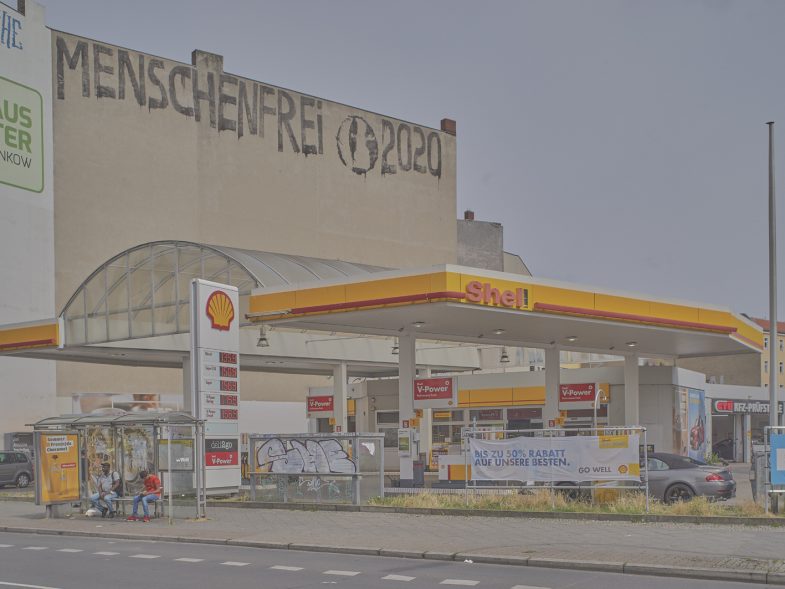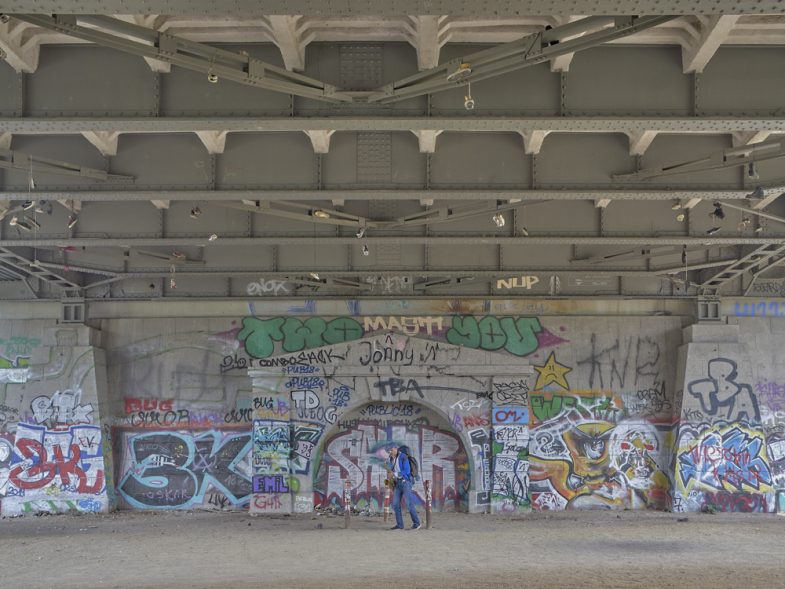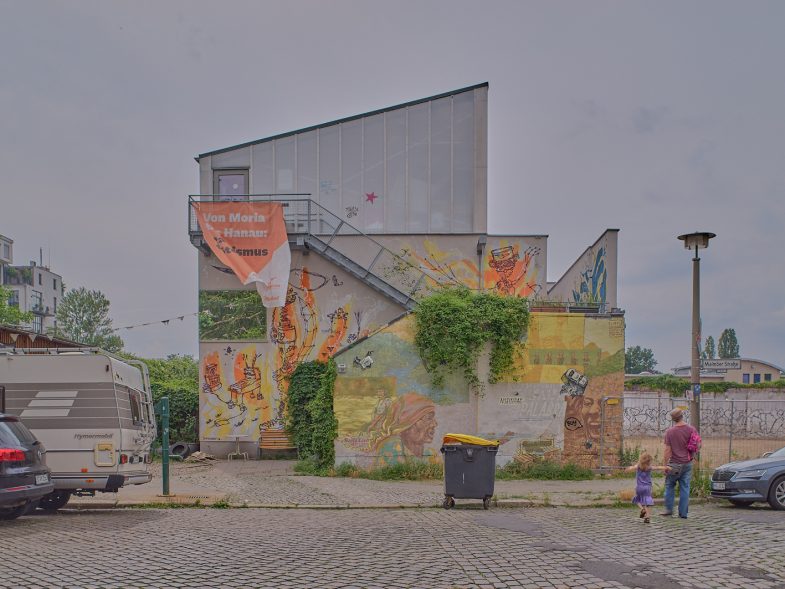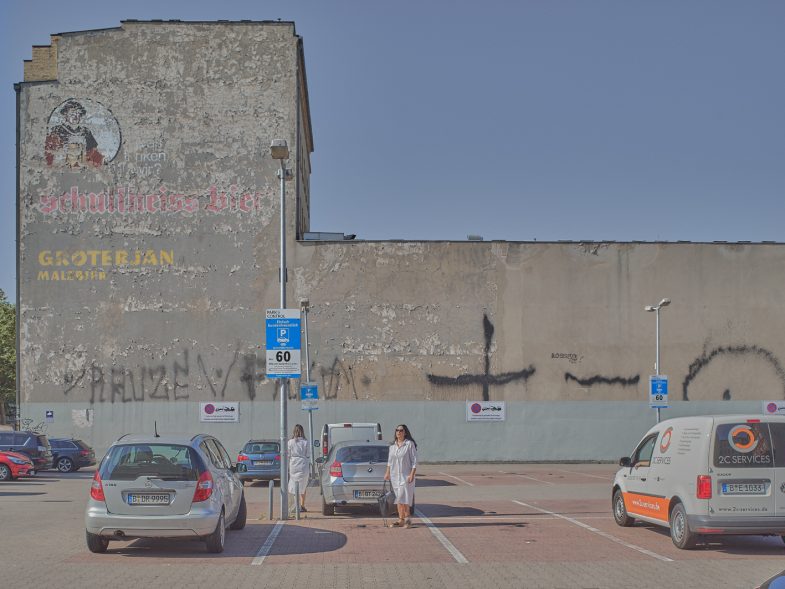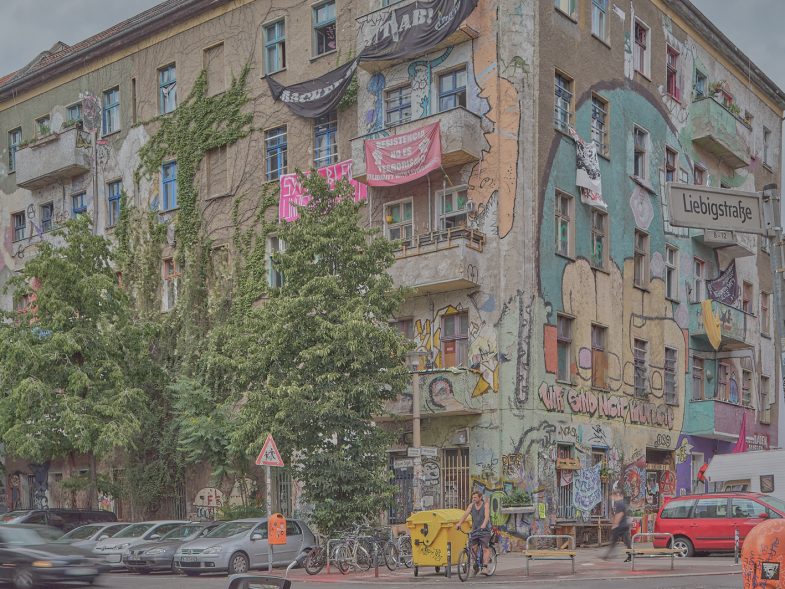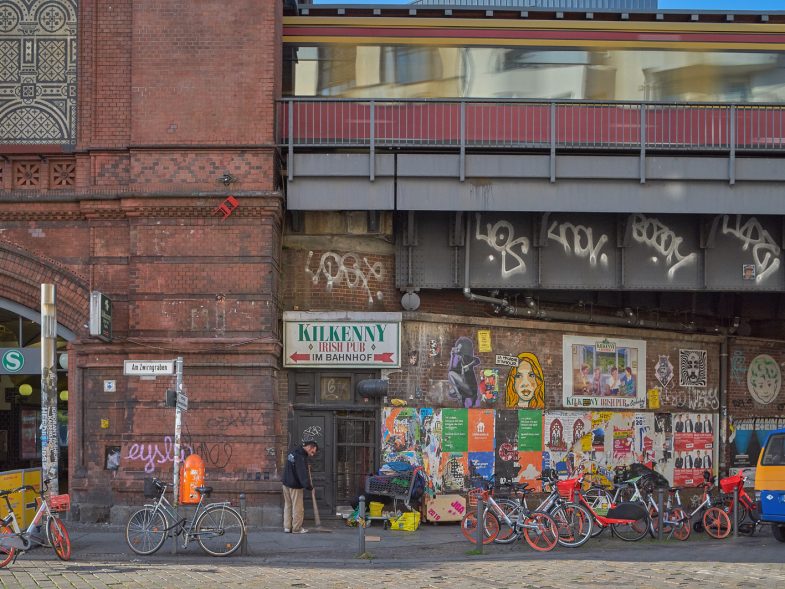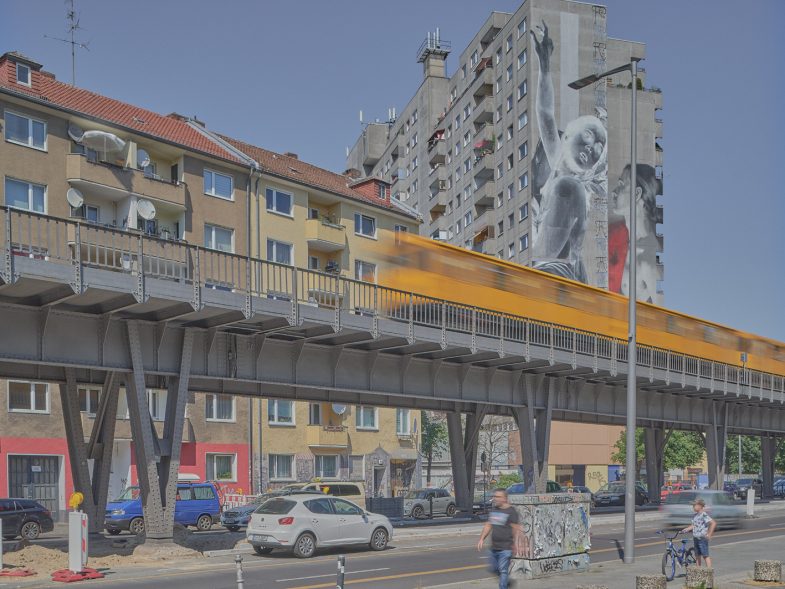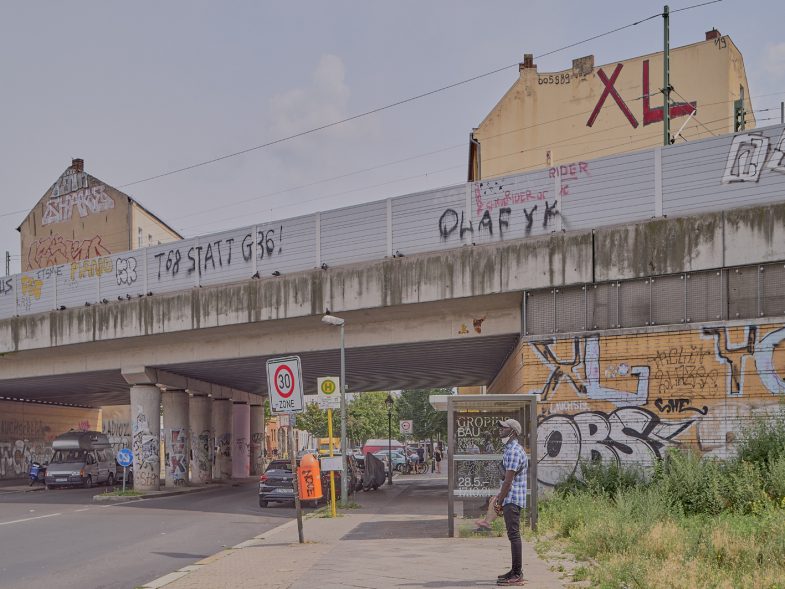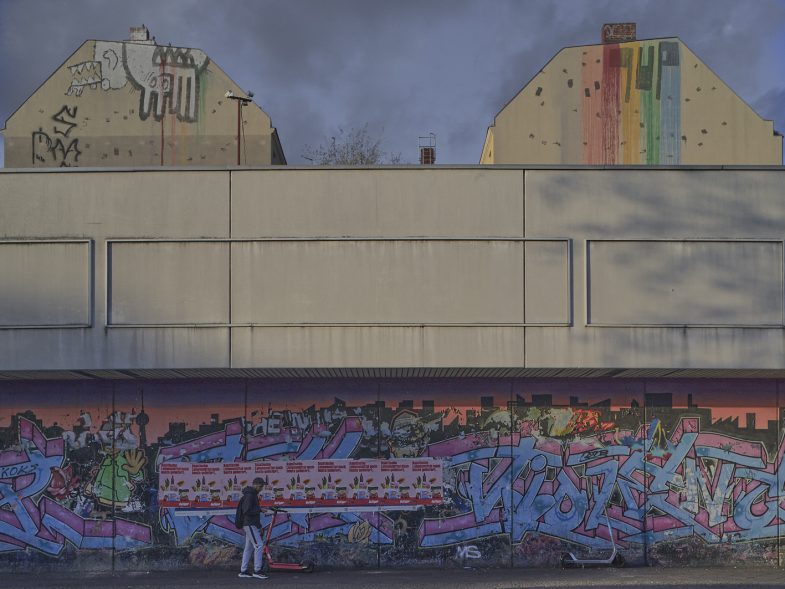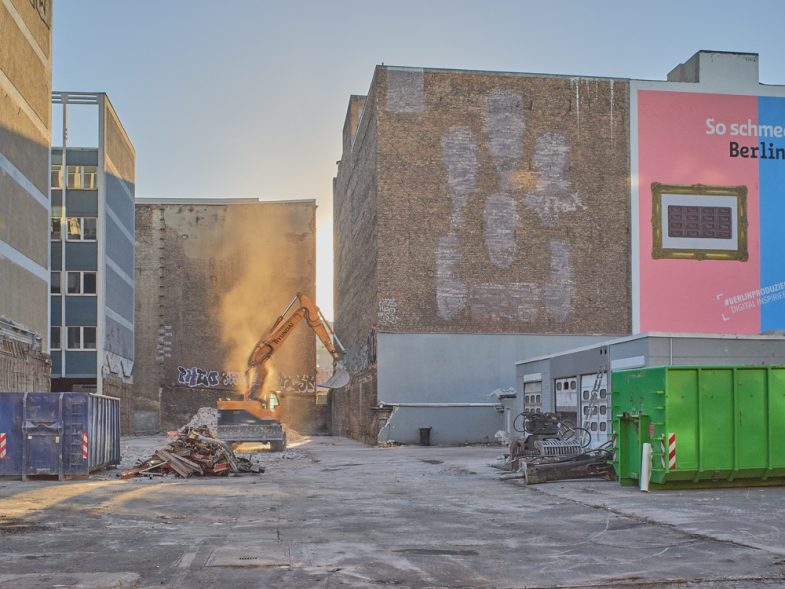Indistinct Traces (2018-2023)
Cities do not exist. They are more like „social organisms“ (cf. Rüthers 2018) that change dynamically, consolidating structures, losing others, overriding, re-establishing. At the same time, cities are a mirror of history and future-oriented laboratories (cf. Löw 2008: 24, 51). „You do not have to dig to do city archeology“, everywhere are built „time layers“, material „deposits“ of the past are visible (ibid). This applies primarily to urban architecture, which has an obvious, almost intrusive importance in the visual formation of urban spaces.
At the same time, the perception of cities is not only determined by buildings, but also to a large extent by public spaces that continuously arise within and between them. Public space is not rigid but dynamic; it is “socially produced” and can therefore be understood as a process that only actually exists “through the behavior of the people who figuratively form it” (Schubert 1999: 17). It thus becomes a space for negotiation, contested materially and discursively; used and produced by heterogeneous groups (cf. Wildner/Berger 2018).
In a multifunctional understanding, it is in particular a communication space (ibid.), whereby urban communication can be found in many different ways. Human contacts are an important facet, but supposedly passive objects and symbols in particular can also act as information carriers into the space and thus significantly influence its perception, for example murals, posters, advertising banners, signs, stickers, graffiti, messages or markings. They can be found in every size and shape. Sometimes the messages seem clear and imperative, sometimes there are no more than cryptic signs, abbreviations, obsessions of pure visibility. Not infrequently, there are aesthetic impertinences, chaotic, meandering formations of letters, shrill splashes of color, illegal border crossings. At the same time one encounters echoes of urban poetry, philosophy, painting and even monumental pictorial art. In many cases, they are calls for consideration, interpretation, reflection, amazement or simply provocation.
Time processes also play an important role. In the competition for visibility, for space for communication and presentation, only those who can maintain their space permanently remain present. This not only leads to a struggle for dominance between communication actors, but also with owners, builders and investors. Gaps in the cityscape are constantly being closed, houses modernized, demolished, built over and thus communication areas called into question.
The project „Indistinct Traces“ addresses communication phenomena in public spaces in Berlin. It is not just about capturing singular information objects, but rather about visualizing urban public communication spaces in their respective contexts. Accordingly, the images are not reduced to the reproduction of isolated symbols, but show the actually emerging public space. They thus become scenic mirrors of contemporary urban communication and at the same time address questions about their decoding, their persistence and their social embedding.
References: Martina Löw, Soziologie der Städte, Suhrkamp 2008; Monica Rüthers, Städte im Wandel bpb 2018; Herbert Schubert, Öffentlicher Raum und Verhaltensregulierung, DISP 1999; Kathrin Wildner/Hilke Marit Berger, Das Prinzip des öffentlichen Raums, bpb 2018.
